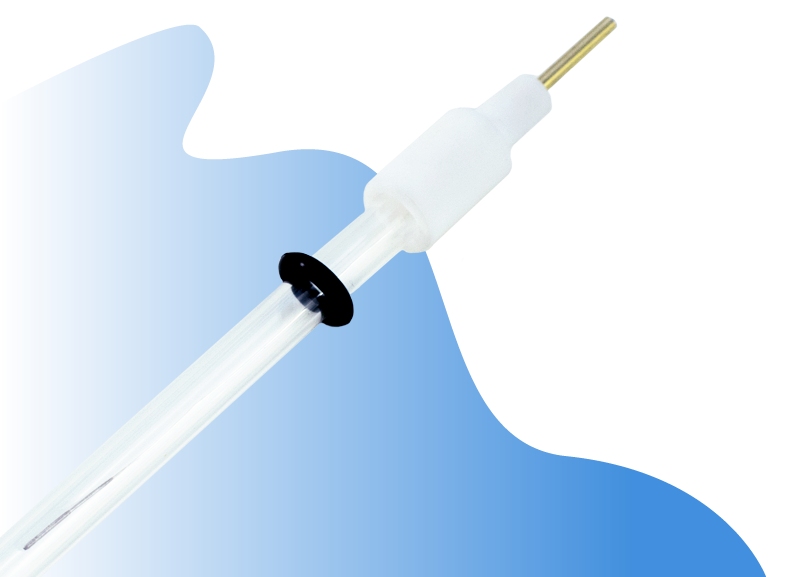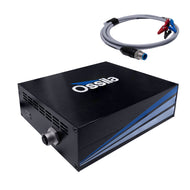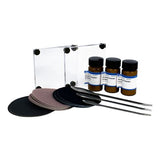Electrochemistry Supplies
Our range of electrochemistry supplies includes a selection of electrochemical cells, photoelectrochemical cells, working electrodes, counter electrodes, and reference electrodes. Combined with the Ossila Potentiostat, we supply everything you need to perform cyclic voltammetry in your commercial, academic, or teaching lab.
For the best value, the Ossila Potentiostat is available as a package deal, which includes the potentiostat itself plus electrochemical glassware, a platinum disk working electrode, platinum wire counter electrode and your choice of non-aqueous Ag/Ag+ or aqueous Ag/AgCl reference electrode.
Electrochemistry Collections
Browse Electrochemistry Supplies
Related categories: substrates and fabrication, solution making supplies, equipment accessories, general laboratory supplies
Filter by product type:
Resources and Support
 What is an Electrochemical Cell?
What is an Electrochemical Cell?
An electrochemical cell is defined as a device that generates electrical energy from chemical reactions or uses electrical energy to drive chemical reactions. The simplest possible electrochemical cell consists of two connected electrodes in an electrolyte solution.
Read more... What are electrodes?
What are electrodes?
An electrode is made from conductive material that can transmit electricity. When an electric current is applied, the electrode facilitates the transfer of electrons, enabling electrical reactions.
Read more... PEEK vs PTFE
PEEK vs PTFE
The choice of whether to use PEEK (polyether ether ketone) or PTFE (polytetrafluoroethylene, Teflon) comes down to the conditions of your planned experiments. The key polymer properties to consider are:
Read more... What is a Photoelectrochemical Cell?
What is a Photoelectrochemical Cell?
A photoelectrochemical cell (PEC) is a device that converts solar energy (light) into chemical energy or electricity. Light activates a semiconductor or photosensitizer component within the cell.
Read more...Voltammetry Support
 Cyclic Voltammetry Basics, Setup, and Applications
Cyclic Voltammetry Basics, Setup, and Applications
Cyclic voltammetry is an electrochemical technique for measuring the current response of a redox active solution to a linearly cycled potential sweep between two or more set values.
Read more...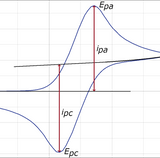 Cyclic Voltammetry Applications and Uses
Cyclic Voltammetry Applications and Uses
Cyclic voltammetry is a versatile electrochemical method with a range of different applications. In cyclic voltammetry, each successful forwards and backwards potential sweep produces a 'duck-shaped' plot known as a cyclic voltammogram.
Read more...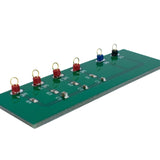 Troubleshooting Cyclic Voltammetry and Voltammograms
Troubleshooting Cyclic Voltammetry and Voltammograms
Cyclic voltammetry is a powerful and versatile electrochemical technique. With modern potentiostats and software packages, the method is relatively straight-forward to perform. Despite this apparent simplicity, there are still a number of things that can go wrong, particularly when setting up the electrochemical cell.
Read more... Linear Sweep Voltammetry: Introduction and Applications
Linear Sweep Voltammetry: Introduction and Applications
Linear sweep voltammetry (LSV) is a simple electrochemical technique. The method is similar to cyclic voltammetry, but rather than linearly cycling over the potential range in both directions, linear sweep voltammetry involves only a single linear sweep from the lower potential limit to the upper potential limit.
Read more... What is Voltammetry? Types and Applications
What is Voltammetry? Types and Applications
Voltammetry is the study of the current response of a chemical under an applied potential difference. Voltammetry encompasses a number of different methods.
Read more...Potentiostat Support
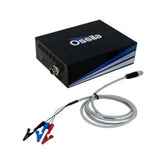 Ossila Potentiostat User Manual
Ossila Potentiostat User Manual
Ossila"s Potentiostat is low-cost and easy-to-use system for performing cyclic voltammetry measurements. Cyclic voltammetry is one of the most widely used electrochemical techniques, providing important information about materials.
Read more...The latest software and drivers including our cyclic voltammetry software for the Ossila Potentiostat and more.
Read more...

